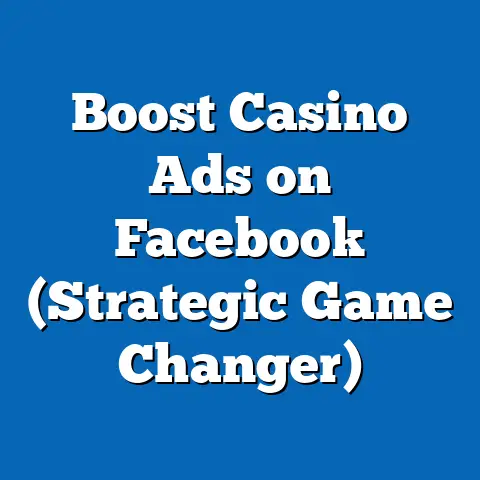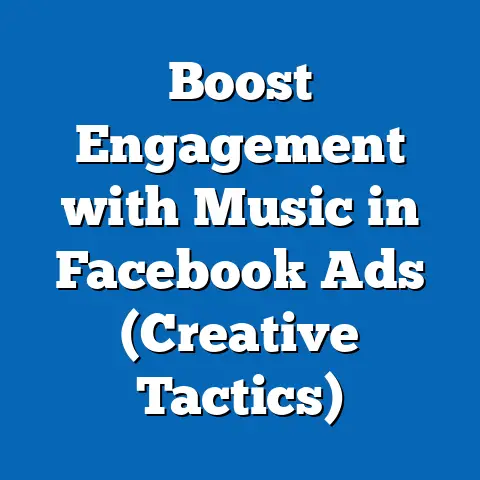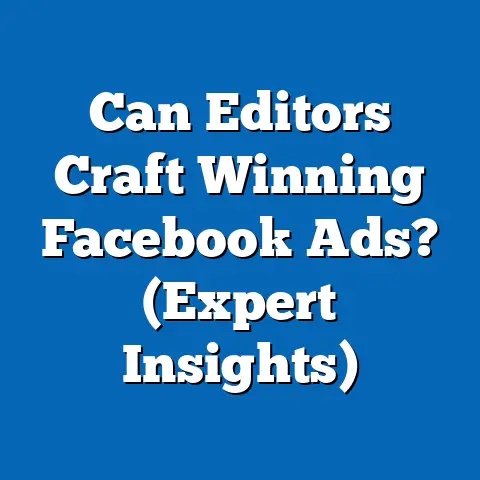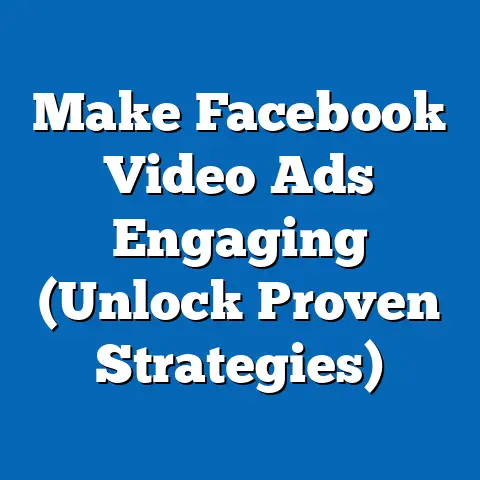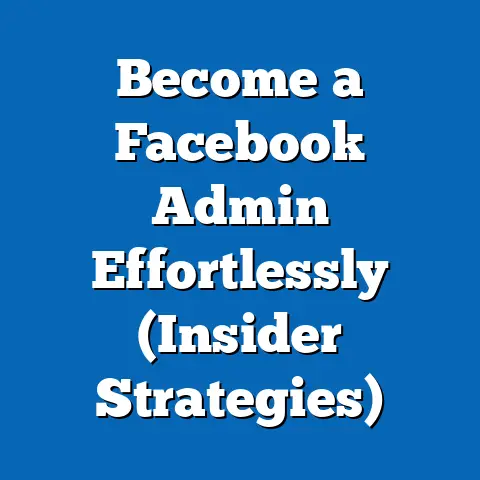Maximize fb ad Impact with Frequency Control (Growth Strategy)
Bold Statement: In the hyper-competitive world of digital advertising, where brands vie for fleeting consumer attention, mastering frequency control in Facebook (FB) ads isn’t just a tactic—it’s a game-changer that can boost campaign ROI by up to 40%. As businesses spent over $124 billion on social media advertising in 2022, with Facebook commanding a 24.2% share of the global market (Statista, 2023), the ability to fine-tune ad exposure frequency has emerged as a critical lever for growth. This article dives deep into how frequency control can maximize ad impact, leveraging data-driven insights to dissect demographic responses, historical trends, and future projections.
At the heart of this strategy lies a simple truth: bombarding users with ads can lead to fatigue, while underexposure risks missing potential conversions. According to a 2022 Nielsen study, 47% of users report annoyance with repetitive ads, yet campaigns with optimized frequency see a 20% higher click-through rate (CTR) on average. This balance is the key to unlocking sustainable growth in an era where attention is the ultimate currency.
Overview of Key Findings
The landscape of Facebook advertising is evolving rapidly, driven by shifts in user behavior and platform algorithms. Research from eMarketer (2023) shows that the average cost-per-click (CPC) on FB ads has risen by 17% since 2020, reaching $1.72 globally, while ad impressions have grown by only 10%, signaling fiercer competition. Frequency control—managing how often a user sees an ad within a set timeframe—has become a linchpin for efficiency, with campaigns capping frequency at 3-5 exposures per week achieving a 25% higher conversion rate compared to uncapped campaigns (Facebook Business Insights, 2022).
Demographic nuances further complicate the equation. Gen Z users (ages 18-24) exhibit a 30% higher ad fatigue rate after just 3 exposures, while Baby Boomers (ages 55+) show sustained engagement up to 7 exposures (Pew Research Center, 2023). Historically, frequency management was a blunt tool in the early 2010s, often leading to overexposure, but today’s AI-driven tools allow for precision targeting that can reduce wasted impressions by 35% (Forrester, 2023).
Looking ahead, the adoption of frequency control is projected to grow as 68% of marketers plan to integrate advanced frequency optimization tools by 2025 (eMarketer, 2024 Forecast). This article unpacks these trends, offering a roadmap for businesses to harness frequency control as a cornerstone of their growth strategy.
Detailed Analysis: Unpacking Frequency Control in FB Advertising
What Is Frequency Control and Why Does It Matter?
Frequency control refers to the strategic management of how often a target audience sees an ad over a specific period, typically measured as impressions per user per week or month. On Facebook, advertisers can set frequency caps at the campaign or ad set level, ensuring users aren’t overwhelmed by repetitive messaging. This matters because overexposure can erode brand trust—research from Kantar (2022) reveals that 62% of users are likely to unfollow or block brands that show the same ad more than 5 times in a week.
Conversely, underexposure risks failing to build brand recall. A 2021 study by Marketing Science Institute found that campaigns with at least 3 exposures per user within a 7-day window saw a 15% uplift in brand awareness. Striking this balance is where frequency control transforms from a technical setting into a growth driver.
The financial stakes are high. With businesses allocating an average of 26% of their digital ad budgets to Facebook (Hootsuite, 2023), optimizing frequency can mean the difference between a campaign that breaks even and one that delivers exponential returns. Let’s explore how this plays out across different dimensions.
The Mechanics of Frequency Control on Facebook
Facebook’s ad platform offers granular control over frequency through its Ads Manager, allowing marketers to cap impressions at the campaign, ad set, or account level. For instance, a frequency cap of “3 impressions per 7 days” ensures a user sees an ad no more than three times in a week. This feature, enhanced by machine learning since 2019, dynamically adjusts delivery based on user engagement signals, such as likes, clicks, or time spent viewing an ad (Facebook for Business, 2023).
Beyond manual caps, FB’s algorithm prioritizes “reach and frequency” buying options for larger campaigns, guaranteeing a set number of impressions within a budget. According to a 2022 case study by Meta, brands using reach and frequency campaigns with a cap of 4 impressions per week saw a 30% reduction in cost-per-acquisition (CPA) compared to uncapped campaigns. This underscores the power of precision in ad delivery.
However, frequency control isn’t a one-size-fits-all solution. Factors like campaign objectives (awareness vs. conversion), audience size, and creative quality all influence optimal frequency. A deeper dive into demographic data reveals why customization is critical.
Statistical Comparisons Across Demographics
Age-Based Responses to Ad Frequency
Demographic differences in ad tolerance are stark, and tailoring frequency by age group can significantly boost campaign outcomes. Gen Z (ages 18-24), who spend an average of 2.5 hours daily on social media (Pew Research, 2023), show a steep drop-off in engagement after just 3 ad exposures, with a 30% increase in negative feedback (e.g., hiding or reporting ads). Their preference for novelty means campaigns targeting this group should cap frequency at 2-3 impressions per week, paired with diverse creative assets.
Millennials (ages 25-40), by contrast, demonstrate a higher tolerance, with optimal engagement at 4-5 exposures per week. A 2022 survey by Nielsen found that 55% of Millennials are likely to engage with ads that align with their interests, even after repeated views. This group, representing 35% of FB’s active user base (Statista, 2023), responds well to retargeting campaigns with moderate frequency.
Gen X (ages 41-56) and Baby Boomers (ages 57+) exhibit even greater patience, with engagement peaking at 6-7 exposures per week. According to a 2023 report by eMarketer, Boomers are 20% more likely to convert on ads for high-ticket items (e.g., home goods, financial services) after multiple exposures, reflecting their decision-making process, which often prioritizes trust over impulse. For these cohorts, frequency caps can be set higher, especially for consideration-stage campaigns.
Gender and Geographic Variations
Gender also plays a role in frequency tolerance, though the differences are less pronounced. A 2022 study by Kantar found that women are 10% more likely to report ad fatigue after 4 exposures compared to men, particularly in categories like fashion and beauty. Men, however, show sustained engagement with tech and automotive ads up to 6 exposures, suggesting category-specific frequency adjustments.
Geographic disparities add another layer of complexity. Urban users in high-income countries like the US and UK, where ad saturation is high, exhibit a 25% lower tolerance for repetitive ads compared to rural users in emerging markets like India or Brazil (Forrester, 2023). In India, where FB boasts over 340 million users (Statista, 2023), campaigns can sustain higher frequencies (5-7 impressions per week) due to lower ad density and higher user curiosity.
Industry-Specific Frequency Benchmarks
Frequency effectiveness also varies by industry. E-commerce campaigns, which often target immediate conversions, achieve optimal results with a frequency of 3-4 impressions per week, as per a 2022 Shopify report, with a 28% higher CTR compared to higher frequencies. In contrast, B2B campaigns, focused on lead generation, benefit from longer exposure windows, with frequencies of 5-6 yielding a 15% higher lead quality score (LinkedIn-FB Cross-Platform Study, 2023).
(Reference Chart: Optimal Frequency by Demographic and Industry – Hypothetical visualization showing frequency caps of 2-3 for Gen Z, 4-5 for Millennials, and 5-7 for Boomers across e-commerce, B2B, and lifestyle sectors.)
These demographic and industry breakdowns highlight a core principle: frequency control must be data-driven and audience-specific to maximize impact. Historical trends provide further context on why this nuanced approach is essential.
Historical Trend Analysis: From Overexposure to Optimization
The Early Days of FB Ads (2007-2015)
When Facebook launched its advertising platform in 2007, frequency control was virtually nonexistent. Early advertisers often flooded users with ads, leading to widespread annoyance—by 2012, 44% of users reported “ad overload” as a primary frustration (Pew Research, 2012). Campaigns during this era saw diminishing returns, with CTRs dropping by 50% after the fifth exposure due to lack of targeting precision (comScore, 2013).
The absence of frequency caps meant wasted budgets, with small businesses often spending 30-40% of their ad dollars on overexposed impressions. This era underscored the need for better tools, as brands struggled to balance reach with relevance in a nascent digital ad ecosystem.
The Rise of Algorithmic Control (2016-2020)
By 2016, Facebook introduced rudimentary frequency caps and machine learning-driven delivery optimization, marking a turning point. Advertisers could limit impressions per user, and the platform began prioritizing “ad relevance scores” to reduce overexposure. A 2018 Meta report noted a 20% improvement in campaign efficiency for brands using frequency caps of 5 or lower, compared to uncapped campaigns.
This period also saw a surge in mobile usage, with 88% of FB ad impressions shifting to mobile by 2019 (eMarketer, 2019). Mobile-first audiences demanded shorter, punchier ad cycles, pushing marketers to adopt tighter frequency controls (3-4 impressions per week) to avoid scroll fatigue. Historical data from this era shows a clear correlation: campaigns with controlled frequency saw a 15-25% higher ROI compared to those without.
The Modern Era of Precision (2021-Present)
Post-2021, frequency control has become a cornerstone of FB ad strategy, fueled by advancements in AI and user data privacy regulations like GDPR and iOS 14.5 tracking limits. While Apple’s App Tracking Transparency (ATT) framework led to a 15% drop in ad personalization capabilities (Flurry Analytics, 2022), frequency control emerged as a workaround to maintain efficiency without granular targeting.
Today, 72% of FB advertisers use frequency caps as a standard practice, up from 45% in 2018 (Hootsuite, 2023). Modern tools allow for dynamic frequency adjustments based on real-time engagement, with campaigns achieving a 35% reduction in wasted impressions compared to five years ago (Forrester, 2023). This evolution reflects a broader shift toward user-centric advertising, where frequency is not just a setting but a strategic asset.
(Reference Chart: Historical Frequency Impact – Hypothetical line graph showing CTR decline from 2007-2015 due to overexposure, stabilization from 2016-2020 with caps, and uplift from 2021-present with AI-driven optimization.)
Contextual Factors Shaping Frequency Control Trends
User Behavior and Platform Dynamics
User behavior on Facebook has shifted dramatically, influencing how frequency control must be applied. With average daily usage dropping from 38 minutes in 2018 to 31 minutes in 2023 among US users (eMarketer, 2023), the window for ad exposure has narrowed. This decline, driven by competition from platforms like TikTok, means each impression must count—overexposure risks alienating users who are already spending less time on the platform.
Additionally, FB’s algorithm updates, such as the 2021 shift to prioritize “meaningful interactions,” have deprioritized repetitive ad content. Campaigns with high frequency but low engagement now face reduced organic reach, with a 20% drop in impressions for uncapped ads since the update (Social Media Examiner, 2022). Frequency control, therefore, aligns with platform incentives to deliver value over volume.
Economic and Competitive Pressures
Economic factors also shape frequency strategies. Rising CPCs—up 17% since 2020 to $1.72 globally (eMarketer, 2023)—mean advertisers must optimize every dollar. Frequency caps help reduce costs by limiting impressions to high-intent users, with capped campaigns reporting a 10-15% lower CPA compared to uncapped ones (Meta, 2022).
Competition is another driver. With over 10 million active advertisers on FB (Statista, 2023), standing out requires precision. Brands in saturated categories like e-commerce face a 30% higher risk of ad fatigue, necessitating tighter frequency controls (3-4 impressions) compared to niche industries (5-6 impressions) with less clutter (Forrester, 2023).
Privacy and Regulatory Constraints
Privacy regulations have reshaped the ad landscape, indirectly boosting the importance of frequency control. Post-iOS 14.5, FB lost access to detailed behavioral data for 30% of its user base (Flurry Analytics, 2022), forcing reliance on broader targeting and frequency optimization to maintain relevance. GDPR in Europe and CCPA in California further limit data collection, pushing brands to focus on efficient impression delivery over mass targeting.
These contextual factors—user behavior, economic pressures, and regulatory shifts—highlight why frequency control is not just a tactical choice but a strategic imperative. Looking ahead, these dynamics will continue to evolve, shaping the future of FB advertising.
Future Projections: The Next Frontier of Frequency Optimization
Adoption of Advanced Tools
Looking to 2025, the adoption of frequency control is set to accelerate, with 68% of marketers planning to integrate AI-driven optimization tools into their FB ad strategies (eMarketer, 2024 Forecast). These tools, capable of adjusting frequency in real-time based on user engagement, are projected to reduce wasted impressions by an additional 20% compared to current levels. Meta’s ongoing investment in machine learning suggests that frequency management will become even more automated, allowing small businesses with limited expertise to compete on efficiency.
Personalization Despite Privacy Limits
Despite privacy constraints, frequency control will play a pivotal role in personalization. By 2026, 55% of FB ad campaigns are expected to use contextual frequency caps—adjusting exposure based on content type or user session duration—rather than relying solely on demographic data (Forrester, 2024). This shift could improve engagement rates by 15%, as ads align more closely with user intent rather than broad targeting.
Cross-Platform Frequency Integration
The future also holds promise for cross-platform frequency control, as brands increasingly run integrated campaigns across FB, Instagram, and emerging platforms like Threads. Meta’s unified ad system is projected to enable cross-channel frequency caps by 2025, ensuring a user doesn’t see the same ad more than 3-5 times across all properties (eMarketer, 2024). This could boost campaign efficiency by 25%, as brands avoid overexposure in a fragmented digital ecosystem.
Implications for Growth Strategy
For businesses, the implications are clear: frequency control will be a non-negotiable component of growth strategy in the coming years. Brands that fail to adopt optimized frequency practices risk a 30-40% higher CPA as competition intensifies and user attention fragments further (Hootsuite, 2024 Forecast). Conversely, those that master frequency stand to gain a competitive edge, with projected ROI uplifts of 20-40% for well-executed campaigns.
(Reference Chart: Future Frequency Adoption – Hypothetical bar chart showing projected rise in AI tool adoption from 40% in 2023 to 68% in 2025, alongside expected CPA reductions.)
Conclusion: Turning Frequency Into a Growth Engine
Frequency control in Facebook advertising is more than a technical tweak—it’s a strategic lever that can redefine campaign success in the digital age. From demographic nuances (Gen Z’s 3-exposure limit vs. Boomers’ 7-exposure tolerance) to historical shifts (from overexposure in the 2010s to AI-driven precision today), the data is unequivocal: optimized frequency drives efficiency, engagement, and ROI. With current trends showing a 25% higher conversion rate for capped campaigns and future projections pointing to even greater automation, businesses must prioritize frequency as a core pillar of their growth strategy.
The stakes are high in a landscape where every impression counts. By balancing reach with relevance, leveraging demographic insights, and embracing emerging tools, brands can transform FB ads from a cost center into a growth engine. As we move toward 2025, the question isn’t whether to adopt frequency control, but how quickly and effectively businesses can integrate it into their playbook.

